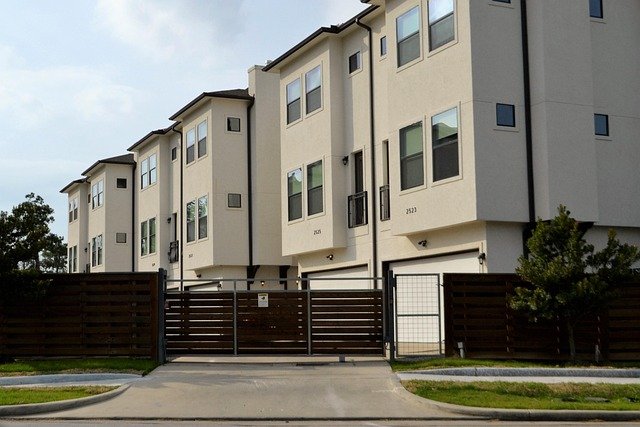Microunit Living: The Next Frontier in Urban Real Estate
The urban housing landscape is undergoing a radical transformation, with microunits emerging as a compelling solution to skyrocketing rents and space constraints in major cities. These compact living spaces, typically ranging from 200 to 400 square feet, are reshaping how urban dwellers conceptualize home and challenging traditional notions of residential real estate. With 68% of the world's population projected to live in urban areas by 2050, microunits are poised to play a pivotal role in addressing housing shortages and affordability issues.

Defining Features of Microunits
Microunits are characterized by their efficient use of space. Every square foot is meticulously designed to serve multiple purposes. Furniture often doubles as storage, and rooms are configured to transform throughout the day. For instance, a murphy bed might fold into the wall, revealing a home office setup. High ceilings and large windows are common features, creating an illusion of spaciousness and bringing in natural light to combat the potential claustrophobia of small spaces.
The Economic Rationale Behind Microunits
From a developer’s perspective, microunits offer an attractive proposition. By increasing the number of units per building, developers can potentially boost their return on investment. For renters or buyers, microunits provide an opportunity to live in desirable urban locations at a fraction of the cost of traditional apartments. In cities like San Francisco or New York, where average rents for one-bedroom apartments can exceed $3,000 per month, microunits often come in at 20-30% less, making prime locations accessible to a broader demographic.
Target Demographics and Market Demand
Millennials and young professionals constitute the primary market for microunits. This demographic often prioritizes location over space, valuing proximity to work, entertainment, and cultural amenities. Additionally, the rise of the gig economy and remote work has reduced the need for large living spaces for many urban dwellers. Empty nesters looking to downsize and maintain an urban lifestyle have also shown interest in microunit living, creating a diverse tenant mix in these developments.
Regulatory Challenges and Zoning Considerations
The proliferation of microunits hasn’t been without hurdles. Many cities have minimum size requirements for residential units, necessitating zoning changes to accommodate these smaller dwellings. Concerns about overcrowding and potential impacts on neighborhood character have led some communities to resist microunit developments. However, as housing affordability crises persist in many urban areas, local governments are increasingly open to revising regulations to facilitate microunit construction.
Design Innovations in Microunit Spaces
Architects and interior designers are pushing the boundaries of creativity to make microunit living not just tolerable but desirable. Modular furniture systems, automated storage solutions, and multi-functional spaces are becoming standard features. Some developments incorporate shared amenities like rooftop gardens, co-working spaces, and communal kitchens to complement the compact private units, fostering a sense of community among residents.
The Environmental Angle
Microunits align with the growing emphasis on sustainable urban development. Smaller living spaces typically consume less energy for heating and cooling, and their central locations often reduce residents’ reliance on personal vehicles. Some microunit developments incorporate green building technologies, further enhancing their environmental credentials. This eco-friendly aspect appeals to environmentally conscious urban dwellers and aligns with many cities’ sustainability goals.
Investment Potential and Market Outlook
For real estate investors, microunits present an intriguing opportunity. While the concept is still relatively new in many markets, early adopters have seen promising returns. The higher density of units can lead to increased rental income per square foot compared to traditional apartments. However, investors should be aware of potential risks, including regulatory changes, shifts in market preferences, and the need for more frequent tenant turnover due to the transient nature of some microunit dwellers.
Challenges and Criticisms
Despite their growing popularity, microunits face criticism. Some argue that they contribute to the normalization of substandard living conditions and may exacerbate issues of income inequality in urban areas. There are also concerns about the long-term livability of these spaces, particularly for families or as residents age. Critics argue that while microunits may address immediate housing needs, they might not be sustainable solutions for building diverse, long-term communities.
The Future of Microunit Living
As urban populations continue to grow and housing affordability remains a pressing issue, microunits are likely to become an increasingly significant segment of the real estate market. Future developments may see further innovations in design and technology to enhance livability. The concept may also evolve to include more family-oriented options or integrate more extensively with co-living models.
The rise of microunit living represents a paradigm shift in urban real estate, challenging traditional notions of home and lifestyle. While not without controversy, these compact dwellings offer a potential solution to some of the most pressing housing issues facing major cities. As the concept matures and adapts to different markets and regulatory environments, microunits may well become a staple of the urban housing landscape, reshaping cityscapes and redefining what it means to live in the heart of the city.





